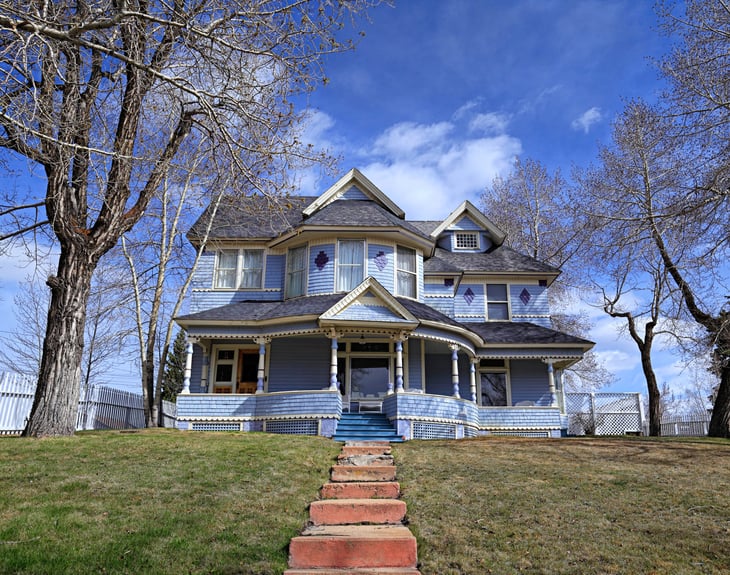
Editor's Note: This story originally appeared on Inspection Support Network.
After more than a year and a half of a red-hot residential real estate market with high competition and record prices, recent months have shown some signs that the market is finally beginning to cool.
Part of the reason for this is seasonal, as the fall and winter months typically see a lower volume of home sales than the spring and summer. Other observers have suggested that a sharp increase in home values over the last 18 months has begun to price more would-be homebuyers out of the market. But one of the biggest factors is that after reaching record lows last year, the inventory of homes for sale began to turn upward this summer, finally bringing more supply into the market.
To determine the locations with the oldest homes, researchers at Inspection Support Network calculated the median age of the existing housing stock, including both owner-occupied and renter-occupied units. In the event of a tie, the location with the higher percentage and/or number of housing units built prior to 1940 was ranked higher. The data used in this analysis is from the U.S. Census Bureau’s American Community Survey.
Here are the large metros (population 1 million or more) with the oldest homes.
15. St. Louis, MO-IL

- Median age of existing housing units: 47
- Percentage of housing units built prior to 1940: 16.4%
- Total housing units built prior to 1940: 208,218
- Percentage of housing built in 2000 or later: 16.3%
- Total housing units built in 2000 or later: 207,171
14. Chicago-Naperville-Elgin, IL-IN-WI
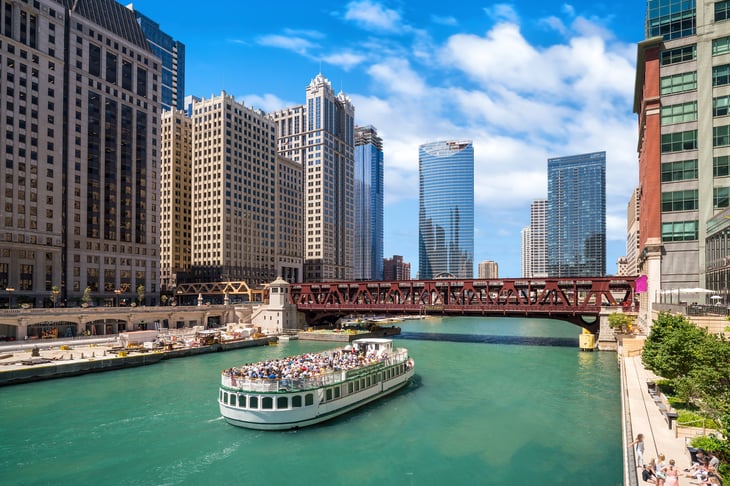
- Median age of existing housing units: 49
- Percentage of housing units built prior to 1940: 20.7%
- Total housing units built prior to 1940: 800,679
- Percentage of housing built in 2000 or later: 14.6%
- Total housing units built in 2000 or later: 563,706
13. Los Angeles-Long Beach-Anaheim, CA

- Median age of existing housing units: 52
- Percentage of housing units built prior to 1940: 12.0%
- Total housing units built prior to 1940: 562,864
- Percentage of housing built in 2000 or later: 10.0%
- Total housing units built in 2000 or later: 468,197
12. Detroit-Warren-Dearborn, MI
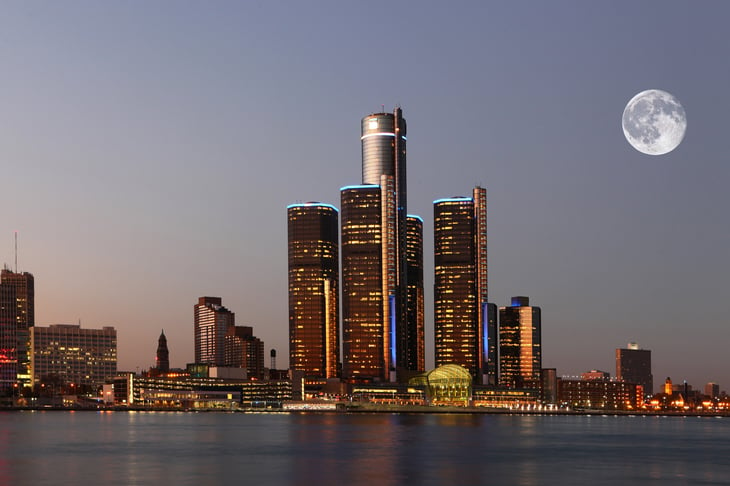
- Median age of existing housing units: 52
- Percentage of housing units built prior to 1940: 12.7%
- Total housing units built prior to 1940: 243,731
- Percentage of housing built in 2000 or later: 11.7%
- Total housing units built in 2000 or later: 223,794
11. San Francisco-Oakland-Berkeley, CA

- Median age of existing housing units: 53
- Percentage of housing units built prior to 1940: 19.4%
- Total housing units built prior to 1940: 357,597
- Percentage of housing built in 2000 or later: 12.2%
- Total housing units built in 2000 or later: 223,822
10. Hartford-East Hartford-Middletown, CT

- Median age of existing housing units: 53
- Percentage of housing units built prior to 1940: 19.5%
- Total housing units built prior to 1940: 100,927
- Percentage of housing built in 2000 or later: 9.6%
- Total housing units built in 2000 or later: 49,874
9. Rochester, NY
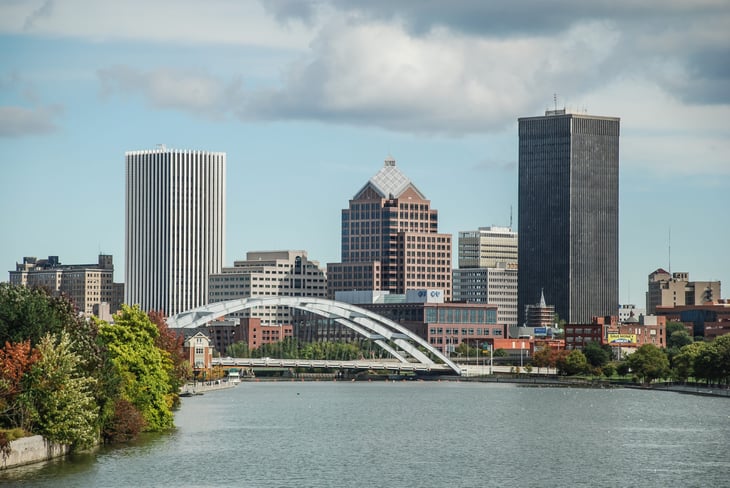
- Median age of existing housing units: 54
- Percentage of housing units built prior to 1940: 28.1%
- Total housing units built prior to 1940: 136,064
- Percentage of housing built in 2000 or later: 10.4%
- Total housing units built in 2000 or later: 50,442
8. Milwaukee-Waukesha, WI

- Median age of existing housing units: 55
- Percentage of housing units built prior to 1940: 22.0%
- Total housing units built prior to 1940: 150,612
- Percentage of housing built in 2000 or later: 11.5%
- Total housing units built in 2000 or later: 78,601
7. Philadelphia-Camden-Wilmington, PA-NJ-DE-MD

- Median age of existing housing units: 55
- Percentage of housing units built prior to 1940: 22.6%
- Total housing units built prior to 1940: 566,040
- Percentage of housing built in 2000 or later: 11.9%
- Total housing units built in 2000 or later: 297,410
6. Boston-Cambridge-Newton, MA-NH

- Median age of existing housing units: 57
- Percentage of housing units built prior to 1940: 32.6%
- Total housing units built prior to 1940: 646,900
- Percentage of housing built in 2000 or later: 13.0%
- Total housing units built in 2000 or later: 258,246
5. Cleveland-Elyria, OH

- Median age of existing housing units: 58
- Percentage of housing units built prior to 1940: 23.6%
- Total housing units built prior to 1940: 227,382
- Percentage of housing built in 2000 or later: 9.7%
- Total housing units built in 2000 or later: 93,217
4. Providence-Warwick, RI-MA

- Median age of existing housing units: 58
- Percentage of housing units built prior to 1940: 31.1%
- Total housing units built prior to 1940: 219,952
- Percentage of housing built in 2000 or later: 8.1%
- Total housing units built in 2000 or later: 57,081
3. Pittsburgh, PA

- Median age of existing housing units: 60
- Percentage of housing units built prior to 1940: 26.1%
- Total housing units built prior to 1940: 295,410
- Percentage of housing built in 2000 or later: 10.2%
- Total housing units built in 2000 or later: 116,126
2. New York-Newark-Jersey City, NY-NJ-PA

- Median age of existing housing units: 60
- Percentage of housing units built prior to 1940: 27.7%
- Total housing units built prior to 1940: 2,163,115
- Percentage of housing built in 2000 or later: 10.5%
- Total housing units built in 2000 or later: 819,388
1. Buffalo-Cheektowaga, NY
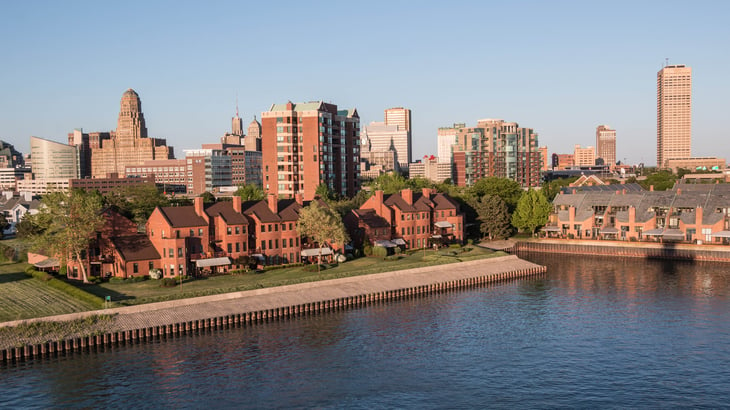
- Median age of existing housing units: 63
- Percentage of housing units built prior to 1940: 29.6%
- Total housing units built prior to 1940: 157,064
- Percentage of housing built in 2000 or later: 8.4%
- Total housing units built in 2000 or later: 44,768
Detailed Findings & Methodology

The data used in this analysis is from the U.S. Census Bureau’s 2019 American Community Survey. To determine the locations with the oldest homes, researchers calculated the median age of existing housing units, including both owner-occupied and renter-occupied units.
In the event of a tie, the location with the higher percentage and/or number of housing units built prior to 1940 was ranked higher. To improve relevance, only metropolitan areas with at least 100,000 residents were included.





Add a Comment
Our Policy: We welcome relevant and respectful comments in order to foster healthy and informative discussions. All other comments may be removed. Comments with links are automatically held for moderation.